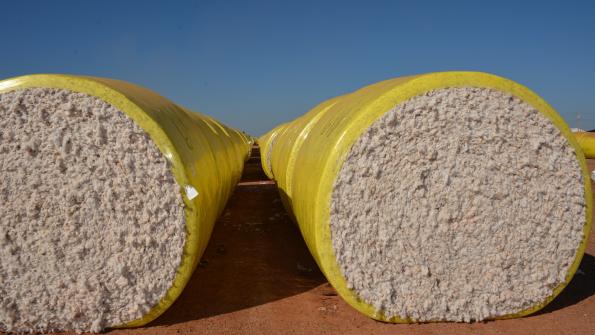November 17, 2016

USDA’s November forecast of 2016/17 cotton supply and demand numbers was a little more bearish than the previous month’s adjustment.
World cotton supply was increased, in part from some modest increases in beginning stocks in Central Asia and a few other countries. In addition, there were increases in forecasted production in India (+500,000 bales) and the U.S. (+130,000 bales). With some minor adjustments to the trade variables, the month-over-month increase in world ending stocks for 2016/17 was 0.96 million bales.
The increase in U.S. production was dominated by a large 400,000 bale increase in Texas, less 140,000 bale and 150,000 bale reductions in the Carolinas and Georgia, respectively.
All of these were reasonable adjustments given the anecdotal evidence of good yields in West Texas, as well as post-hurricane impacts in the southeastern states.
Forecasted U.S. mill use and exports were unchanged compared to October. After a small adjustment to the “Unaccounted” category, the bottom line was a 200,000 bale increase in projected U.S. ending stocks, to 4.5 million bales.
NEGLIGIBLE MARKET REACTION
Such monthly adjustments to either world or U.S. ending stocks would typically also have a neutral to mild price weakening impact, all other things being equal.
The market reaction to this report was negligible. ICE futures remained within the recent 1 cent range above 68 cents for another day before breaking out on a small three day, three cent rally.
While nobody knows where prices will ultimately go, I do not yet see how there is enough demand to sustain prices over 70 cents for very long. Hence, I do not see much rationale in paying storage costs to wait on higher prices for unsold cotton.
However, growers don’t have to give up entirely on the possibility of higher prices. A simple hedging strategy with options is to fix the cash price (either with a forward contract, a pool contract, or a post-harvest spot contract), and then buy a call option. Call options premiums increase in value with increases in the futures market price. This is because the owner of a call option has the right (but not the obligation) to have bought the futures market at the call strike price.
For the latest on southwest agriculture, please check out Southwest Farm Press Daily and receive the latest news right to your inbox.
STORAGE HEDGE
Thus, owning a call option represents insurance against selling your cash cotton and then missing out on a later price rally. It is sometimes called a “storage hedge” because it is a substitute for storing your cotton for later sale.
Figure 1 shows a 70 cent Jul’17 call option (premium traced by the red line, in cents per pound) and a cheaper 70:76 call spread (the green line). The call premiums track the movement of the underlying Jul’17 futures price.
On November 11 the 70 call traded at 4.24 cents per pound, while the 76 call was worth 2.13 cents. Therefore, the call spread cost 4.24-2.13=2.11 cents, or about half the cost of the 70 call. One question to consider is: What is the likelihood that Jul’17 futures will rise at least to 74 cents (i.e., the call strike price plus the call premium)? Can you sleep at night by selling your cotton and giving up the possibility of participating in such a rally? Is it worth over 4 cents to insure that you would participate in this rally? And if such a rally had little chance of exceeding 76 cents, does the cheaper call spread seem reasonable to you?
For additional thoughts on these and other cotton marketing topics, please visit my weekly on-line newsletter at http://agrilife.org/cottonmarketing/

About the Author(s)
You May Also Like




